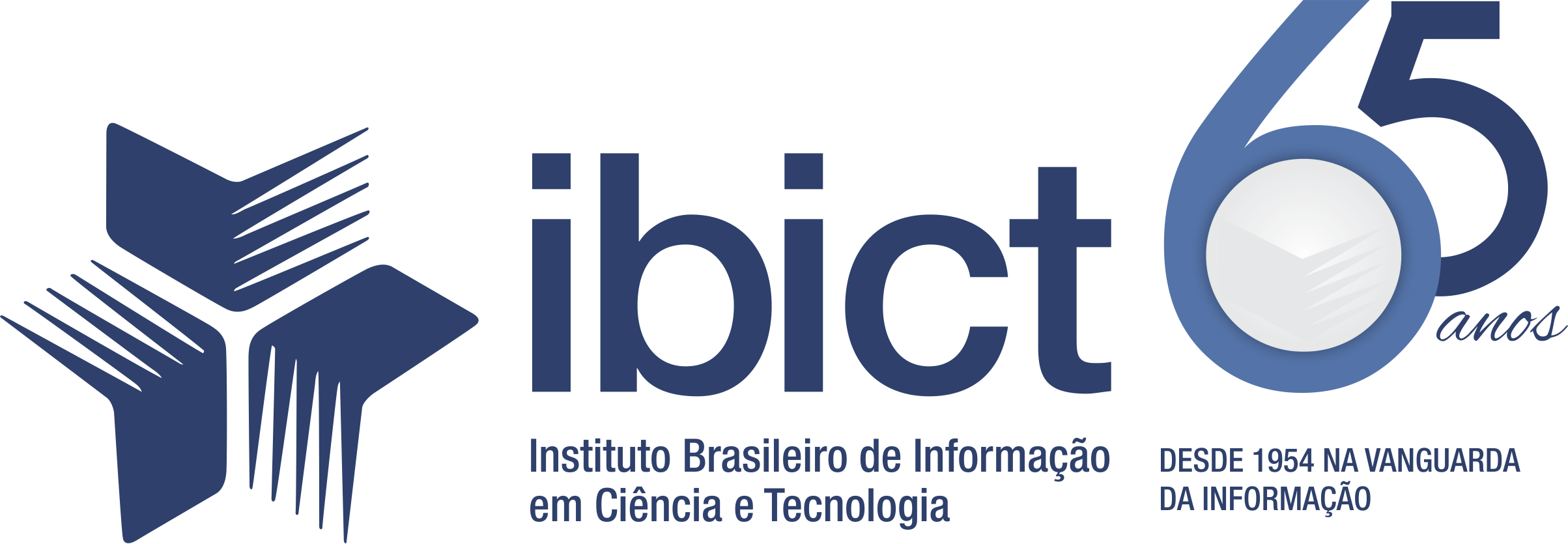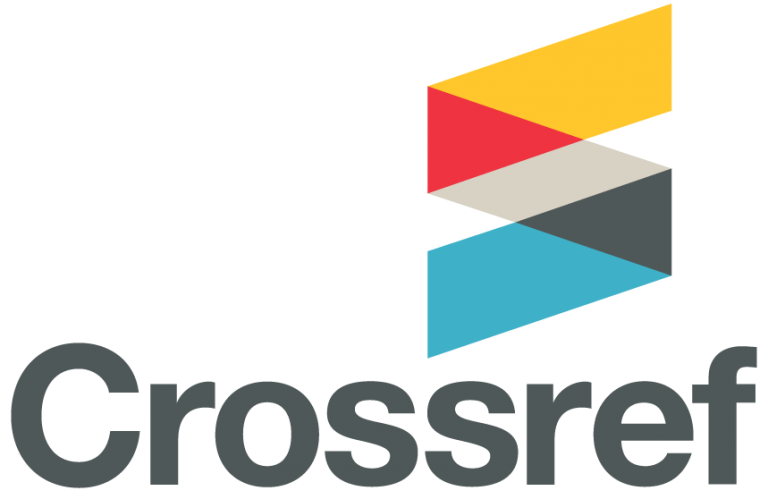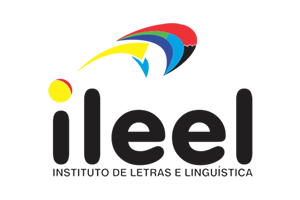Sign Language Phonology
On Phonological Models
DOI:
https://doi.org/10.14393/LL63-v37n2-2021-16Keywords:
Linguistics, Phonology, Phonological models, Sign languagesAbstract
In a traditional view, phonology refers to the field of linguistics that deals with the study of language sounds. Even though sign languages are not based on sounds, they are also made up of smaller units, and such units ratify that there is a phonological analysis level for them. Drawing on a literature review, the present research aimed at exploring the phonological models which have been proposed for the analysis of sign languages. This article addresses the following phonological models: Quiremic Model (QM), Movement-Hold Model (MHM), Hand-Tier Model (HTM), Moraic Model (MM), Dependence Phonology Model (DPM), Visual Phonology Model (VPM), and Prosodic Model (PM). These models are described based on the contributions by Brentari (1998) and Costa (2012), in addition to the main scholars who defend each of these models.Downloads
References
ANDERSON, J. N.; EWEN, C. J. Principles of dependency phonology. Cambridge: Cambridge University Press, 1987. DOI: https://doi.org/10.1017/CBO9780511753442.
ANDERSON, J. N.; JONES, C. Phonological structure and the history of English. Amsterdam: North-Holland, 1977.
ANDERSON, J. N.; JONES, C. Three thesis concerning phonological representations. Journal of linguistics, v. 10, p. 1-26, 1974. [First version in Edinburgh Working Papers in Linguistics, v. 1, 1972]. DOI: https://doi.org/10.1017/S0022226700003972.
ANN, J. On the relation between ease of articulation and frequency of occurrence of handshape in two sign languages. Lingua, v. 98, p. 19-41, 1996. DOI: https://doi.org/10.1016/0024-3841(95)00031-3.
BATTISON, R. Lexical borrowing in American Sign Language. Silver Spring, MD: Linstok, 1978. DOI: https://doi.org/10.1353/sls.1974.0005
BATTISON, R. Phonological deletion in American Sign Language. Sign language studies, n. 5, p. 1-19, 1974.
BISOL, L. (Org.). Introdução a estudos de fonologia do português brasileiro. 4. ed. Porto Alegre: EDPUCRS, 2005.
BOYES-BRAEM, P. Distinctive features of the handshapes of American Sign Language. 1981. Dissertation (PhD) – University of California, Berkeley, 1981.
BRENTARI, D. A prosodic model of sign language phonology. Cambridge: MIT Press, 1998. DOI: https://doi.org/10.7551/mitpress/5644.001.0001
BRENTARI, D. Prosodic Constraints in American Sign Language. In: ANNUAL MEETING OF THE BERKELEY LINGUISTICS SOCIETY, 20, Berkeley, 1994. Proceedings… Berkeley: University of California, 1994. p. 103-112. DOI: https://doi.org/10.3765/bls.v20i1.1461.
BRENTARI, D. Sign language phonology. In: GOLDSMITH, J.; RIGGLE, J.; YU, A. C. L. (Ed.). The handbook of phonology theory. 2. ed. Malden, MA: Wiley-Blackwell, 2011. p. 691-721.
BRENTARI, D. Trilled movement: phonetic realization and formal representation. Lingua, v. 98, p. 43-71, 1996. DOI: https://doi.org/10.1016/0024-3841(95)00032-1.
CAPOVILLA, F. C.; RAPHAEL, W. D. (org.). Dicionário enciclopédico ilustrado trilíngue da língua de Sinais Brasileira – Libras. 3. ed. São Paulo: EDUSP, 2001[2008].
CARR, P. A glossary of phonology. Edinburgh: Edinburgh University Press, 2008.
CHINCHOR, N. The syllable in ASL. Paper presented at the Sign Language Symposium, Cambridge, Mass, 1978.
CORINA, D. To branch or not to branch: underspecification in ASL handshape contours. In: COUTLER, G. R. (Ed). Phonetics and Phonology: current issues in asl phonology. Vol. 3. San Diego, CA: Academic Press, 1993. p. 63-95. DOI: https://doi.org/10.1016/B978-0-12-193270-1.50008-X.
COSTA, R. C. R. Proposta de instrumento para a avaliação fonológica da Língua Brasileira de Sinais: FONOLIBRAS. 2012. Dissertação (Mestrado em Língua e Cultura) – Universidade Federal da Bahia, Instituto de Letras, Programa de Pós-graduação em Língua e Cultura, Salvador, 2012. Disponível em: https://repositorio.ufba.br/ri/handle/ri/17216. Acesso em: 05 abr. 2019.
CRASBORN, O. Review of “L. Uyechi, 1996. The geometry of visual phonology. Stanford: CSLI”. Lingua, 109, p. 65-68, 1999. DOI: https://doi.org/10.1016/S0024-3841(99)00007-8
CRYSTAL, D. A dictionary of Linguistics and Phonetics. 6. ed. Malden, MA: Wiley-Blackwell, 2008. DOI: https://doi.org/10.1002/9781444302776
DIKKEN, M. den; HULST, H. van der. Segmental hierarchitecture. In: HULST, H. van der.; SMITH, N. (ed.). Features, segmental structures and harmony processes: part I. Dordrecht: Foris Publications, 1988. p. 1-78. DOI: https://doi.org/10.1515/9783110875812-003
DRESHER, B. E.; HULST, H. van der. Head-dependent asymmetries in phonology. Toronto Working Papers in Linguistics, v. 12, n. 2, p. 1-17, 1993/1994. Disponível em: http://twpl.library.utoronto.ca/index.php/twpl/article/view/6341/3329. Acesso em: 14 fev. 2011.
DUBOIS, J. et al. Dicionário de lingüística. 9. ed. São Paulo: Cultrix, 2004.
DURAND, J. (Ed.). Dependency and non-linear phonology. London: Croom Helm, 1986.
FERREIRA-BRITO, L. Por uma gramática de línguas de sinais. [reimp.]. Rio de Janeiro: Tempo Brasileiro, 1995[2010].
FERREIRA-BRITO, L. Uma abordagem fonológica dos sinais da LSCB. Espaço: Informativo Técnico-científico do INES, Rio de Janeiro, v. 1, n. 1, p. 20-43, 1990. Disponível em: http://www.ines.gov.br/seer/index.php/revista-espaco/article/view/179. Acesso em: 20 mar. 2020.
GOLDSMITH, J. Autosegmental and metric phonology: a new synthesis. Oxford: Blackwell, 1990.
GOLDSMITH, J. Autosegmental phonology. 1976. Dissertation (PhD) – Massachusetts Institute of technology, Cambridge, 1976.
GOLDSMITH, J. Harmonic phonology. In: GOLDSMITH, J. (ed). The last phonological rule. Chicago: University of Chicago Press, 1993. p. 21-60.
GOLDSMITH, J. Licensing, inalterability, and harmonic rule application. In: CLS 25. Vol. 1, The General Session. Chicago Linguistic Society, University of Chicago, Chicago, 1989.
GOLDSMITH, J. Phonology as an intelligent system. In: NAPOLI, D. J.; KEGL, J. A. (Ed.). Bridges between psychology and linguistics: a Swarthmore festschrift for Lila Gleitman. Hillsdale, N. J.: Lawrence Erlbaum, 1991. p. 247-268.
HULST, H. van der. Atoms of segmental structures: components, gestures and dependency. Phonology, v. 6, n. 2, p. 253-284, 1989. DOI: https://doi.org/10.1017/S0952675700001020.
HULST, H. van der. Head-dependency relations in the representation of signs. In: BOS, H.: SCHERMER, T. (Ed.). Sign language research 1994: Proceedings of the 4th European congress on Sign language research. Münich 1-3 September 1994. Hamburg: Signum Press, 1995(a). p. 11-38. Disponível em: https://harry-van-der-hulst.uconn.edu/wp-content/uploads/sites/1733/ 2016/05/066-Head-dep-relations-in-signs.pdf. Acesso em: 30 mar. 2020.
HULST, H. van der. On the other hand. Lingua, v. 98, p. 121-144, 1996. DOI: https://doi.org/10.1016/0024-3841(95)00035-6.
HULST, H. van der. The composition of handshapes. Trondheim Working Papers, v. 23, p. 1-17, 1995(b). Disponível em: https://harry-van-der-hulst.uconn.edu/wp-content/uploads/sites/ 1733/2016/05/067-The-Composition-of-Handshapes.pdf. Acesso em: 30 mar. 2020.
HULST, H. van der. Units in the analysis of signs. Phonology, Cambridge, v. 10, n. 2, p. 209-241, 1993. DOI: https://doi.org/10.1017/S095267570000004X.
JOHNSON, R. E.; LIDDELL, S. K. Structural diversity in the American Sign Language lexicon. In: Papers from the Twentieth Regional Meeting of the Chicago Linguistic Society. Chicago, IL: Chicago Linguistic Society, 1984. p. 172-186.
KARNOPP. L. B. Aquisição fonológica na língua brasileira de sinais. 1999. Tese (Doutorado) – Pontifícia Universidade Católica de Porto Alegre, Porto Alegre (RS), 1999. Disponível em: https://www.lume.ufrgs.br/handle/10183/60505. Acesso em: 03 mar. 2015.
KLIMA, E.; BELLUGI, U. The signs of language. Cambridge, MA: Harvard University, 1979.
LIDDELL, S. K. Structures for representing handshape and local movement at the phonemic level. In: FISCHER, S. D.; SIPLE, P. (Ed.). Theoretical issues in sign language research. v. 1. Chicago: University of Chicago Press, 1990. p. 37-65.
LIDDELL, S. K. Grammar, gesture, and meaning in American Sign Language. Cambridge: Cambridge University Press, 2003. DOI: https://doi.org/10.1017/CBO9780511615054
LIDDELL, S. K. THINK and BELIEVE: sequentiality in American Sign Language. Language, v. 60, n. 2, p. 372-399, 1984. DOI: https://doi.org/10.2307/413645.
LIDDELL, S. K.; JOHNSON, R. E. American Sign Language compound formation processes, lexicalization, and phonological remnants. Natural language and linguistic theory, v. 4, p. 445-513, 1986. DOI: https://doi.org/10.1007/BF00134470.
LIDDELL, S. K.; JOHNSON, R. E. American Sign Language: the phonological base. In: VALLI, C.; LUCAS, C. (Ed.). Linguistics of American Sign Language: an introduction. Washington, DC: Clerc Books, Gallaudet University Press, 1989 [2000]. Disponível em: https://www.jstor.org/stable/26204052. Acesso em: 30 mar. 2020.
LUTTGENS, K.; HAMILTON, N. Kinesiology: scientific basis of human motion. 9th ed. Dubuque, Iowa: Brown and Benchmark, 1997.
McCARTHY, J.; PRINCE, A. Faithfulness and reduplicative identity. In: University of Massachusetts Occasional Papers in Linguistics 18: Papers in Optimality Theory. Amherst: University of Massachusetts, 1995. Disponível em: https://scholarworks.umass.edu/linguist_faculty_pubs/10. Acesso em: 30 mar. 2020.
MEIER, R. P. Icons, analogues, and morphemes: the acquisition of verb agreement in American Sign Language. Dissertation (PhD) – Univeristy of California, San Diego, 1982.
MINEIRO, A.; COLAÇO, D. Introdução à fonética e fonologia na LGP e na Língua Portuguesa. Lisboa: Universidade Católica Editora, 2010.
PADDEN, C.; PERLMUTTER, D. American Sign Language and the architecture of phonological theory. Natural language & linguistic theory, v. 5, p. 335-375, 1987. DOI: https://doi.org/10.1007/BF00134553.
PERLMUTTER, D. On the segmental representation of transitional and bidirectional movements in ASL phonology. In: FISCHER, S. D.; SIPLE, P. (Ed.). Theoretical issues in sign language research. Vol. 1, Linguistics. Chicago: University of Chicago Press. 1990. p. 67-80.
PERLMUTTER, D. Prosodic vs. segmental structure: A moraic theory of American Sign Language syllable structure. [Unpublished manuscript]. University of California, San Diego, 1991.
PERLMUTTER, D. Sonority and syllable structure in American Sign Language. Linguistic Inquiry, v. 23, p. 407-442, 1992. DOI: https://doi.org/10.1016/B978-0-12-193270-1.50016-9.
PERLMUTTER, D. Why ASL syllable structure is like that of oral language. Paper presented at the Workshop on Sign Language Morphology and Phonology. Amsterdam and Leiden, 1993.
PRINCE, A.; SMOLENSKY, P. Optimality theory: constraint interaction in generative grammar. Rutgers University Center for Cognitive Science – Technical Report 2. New Brunswick: Rutgers University, 1993.
QUADROS, R. M.; KARNOPP, L. B. Língua de sinais brasileira: estudos linguísticos. Porto Alegre: Artmed, 2004. DOI: https://doi.org/10.18309/anp.v1i16.560
SANDLER, W. Assimilation and feature hierarchy ASL. In: BOSCH, A.; NEED, B.; SCHILLER, E. (Ed.). Chicago linguistics society parasession on autosegmental phonology. Chicago, IL: University of Chicago, 1987. p. 266-278.
SANDLER, W. Hand in hand: the roles of the non-dominant hand in sign language phonology. The Linguistic Review, v. 10, n. 4, p. 337-390, 1993. DOI: https://doi.org/10.1515/tlir.1993.10.4.337
SANDLER, W. Phonological representation of the sign: linearity and non-linearity in American Sign Language. Dordrecht: Foris, 1989. DOI: https://doi.org/10.1515/9783110250473
SANDLER, W. Representing handshapes. International review of sign linguistics, p. 115-158, 1996.
SANDLER, W. Temporal aspects and ASL Phonology. In: FISCHER, S.; SIPLE, P. (Ed.). Theoretical issues in sign language research. Vol. I: Linguistics. Chicago, IL: University of Chicago Press, 1990. p. 7-36.
SANDLER, W. The phonological organization of sign languages. Lang Linguist Compass, v. 6, n. 3, p. 162–182, mar. 2012. DOI: https://doi.org/10.1002/lnc3.326
SANDLER, W. The spreading hand autosegment of american sign language. Sign language studies, v. 50, p. 1-28, 1986. DOI: https://doi.org/10.1353/sls.1986.0006
SILVA, T. C. Dicionário de fonética e fonologia. São Paulo: Contexto, 2011.
SILVA, T. C. Fonética e fonologia do português: roteiro de estudos e guia de exercícios. 8. ed. São Paulo: Contexto, 2005.
STACK, K. Tiers and syllable structure: evidence from phonotactics. 1988. Thesis (Master of Arts) – University of California, California, 1988.
STEVENS, K.; KEYSER, S. J. Primary features and their enhancement in consonants. Language, v. 65, n. 1, p. 81-106, 1989. DOI: http://doi.org/10.2307/414843.
STEVENS, K.; KEYSER, S. J.; KAWASAKI, H. Toward a phonetic and phonological theory of redundant features. In: PERKELL, J. S.; KLATT, D. H. (Ed.). Invariance and variability in speech processes. Hillsdale, N.J.: Lawrence Erlbraum, 1986. p. 426-463.
STOKOE, W. C. Sign Language structure. Silver Spring, MD: Linstok Press, 1960.
STOKOE, W. C.; CASTERLINE, D.; CRONEBERG, C. A dictionary of American Sign Language on linguistic principles. 2. ed. Silver Spring, MD: Linstok Press, 1965[1976]. p. vii-xxxi.
SUPALLA, T. Structure and acquisition of verbs of motion and location in American Sign Language. 1982. Dissertation (PhD) – University of California, San Diego, 1982.
UYECHI, L. A. N. Local and global signing space in American Sign Language. NELS 24, Graduate Linguistic Student Association, University of Massachusetts, Amherst, 1994.
UYECHI, L. A. N. The geometry of visual phonology. 1995. Dissertation (PhD) – Stanford University, Stanford, California, 1995 [Published 1996 by CSLI Publications, Stanford].
VALLI, C.; LUCAS, C.; MULROONEY, K. J. (Ed.). Linguistics of American Sign Language: an introduction. 4. ed. Washington: Gallaudet University Press, 2005.
WILBUR, R.; KLIMA, E.; BELLUGI, U. Roots: the search for origins of signs in ASL. Chicago Linguistic Society, v. 19, p. 314-336, 1983.
XAVIER, A. N. Descrição fonético-fonológica dos sinais da língua de sinais brasileira (Libras). 2006. Dissertação (Mestrado em Linguística) – Universidade de São Paulo, São Paulo, 2006. Disponível em: http://teses.usp.br/teses/disponiveis/8/8139/tde-18122007-135347/pt-br.php. Acesso em: 30 mar. 2020.
Downloads
Published
How to Cite
Issue
Section
License
Copyright (c) 2021 Roberto Cesar Reis da Costa (Autor)

This work is licensed under a Creative Commons Attribution-NonCommercial-NoDerivatives 4.0 International License.
The authors retain author's rights but grant the journal the right of firsth publication. The works are licensed under Creative Commons Attribution License, which allows sharing provided that the authors and this journal are properly ackonwledged.













